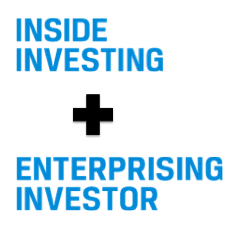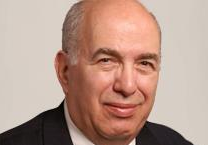The Secret Revolution in Finance

The cold war in the world of trading and information is heating up, as Reuters scrambles to move clients over to a new platform. But this makes me ask myself two questions: Is the world of finance ready to move forward from high priced trading and information platforms? And will thinking in Motifs change everything?
(pssst: the very best thing in this blogpost is right at the bottom)
Who would you rather be? The gold digger or the guy selling tools, Levi’s and food?
Famously, the suppliers in Klondike made more money than anyone else in the gold rush.
You always want to sell the pickaxes, never use them to look for gold.
This rings true in finance as well. All you need to do is look at Michael Bloomberg’s fortune to figure that out.
The Reuters switch
Recently a proverbial earthquake has been felt in the small, but exclusive world of trading terminals.
It all started with the Bloomberg snooping scandals, which caused many banks to pay renewed interest to the long talked about Federated Chat system.
Federated Chat is a open source chatting system run by Markit. Bank of America Merrill Lynch, Credit Suisse, Citigroup, JPMorgan Chase, and CFI Group have just joined the alliance with the original partners Deutsche Bank, Goldman Sachs, Morgan Stanley and Thomson Reuters.
These are some powerful players, and even though I know people close to the situation doubt that Federated Chat will prevail, there will be an alternative solution – and soon.
This means that the almost monopoly Bloomberg has on chat is coming to an end, one way or another.
But the most recent development, the retirement of a Reuters platform, has exposed something rather unexpected. But first, let’s talk retirement.
The latest development in this saga has emerged as Reuters will terminate its popular Reuters 3000 Xtra EOL terminal. Reuters seems to think that all its users will move along to its flagship terminal Eikon.
While I’m told that some users have switched over, it’s not a clear cut situation if all will stay in the Reuters ecosystem.
First, let’s talk price.
A fully loaded Reuters Eikon terminal costs $1,800 per month. On average Reuters users stay with a setup costing around $800 and it starts at $300 for the bare bones version.
That is dwarfed by the price of the Bloomberg terminal, which clocks in over $2,200 dollars per month, before additional live fees.
Before you continue on, can you do me a favor? Can you scroll back up to the top of the article, and look at the picture from the UBS trading floor in UBS Investment Bank’s offices in Stamford, Connecticut. At roughly the size of two American football fields it is the largest trading floor in the world. They guys and girls in that picture trade assets worth over one trillion dollars. Every day.
But imagine the terminal costs in that room. There’s thousands of machines. Each with individual licences.
There’s something a little funny when it comes to these high priced terminals. The guys that demand them to be able to do their jobs rarely foot the bill, and most of the small businesses, asset managers or family offices I’ve come across consider the terminal cost to be a massive drain on their bottom line.
Because in a world with Stocktwits, Twitter, Linkedin, Google Finance and free Bloomberg TV, paying over 2000 dollars per month feels…steep.
I’m not saying the products aren’t any good. I’m just saying a sell-side guy does not necessarily need a $2,200/month Rolodex.
If you’re going to pay for something, you might as well make sure that you’re getting value for your money. You can get a lot for free, but there are plenty of services available to that are useful and don’t cost 2.7 times annual world income.
Trading terminals are being given out for free, while information terminals have dropped a lot in price. So many Reuters and Bloomberg-users might be wise to look at the new products, in anything from information to the new breed of trading.
The cheaper terminal
So while we wait for Federated Chat; what else is there out there?
Depends on what you want to do. First, I want to mention my friends at the Norwegian firm Infront. I’ve worked with them in the past on a integration of Twitter and written some blogs for them.
The reason for this, is because I like them a lot. And their product is really great. In fact, it’s what I’ve used for quite a while now. And so should you.
And now they’re going after the Reuters-users – at about half the cost.
The terminal does 80-90% of everything a Bloomberg terminal does, and it’s closing the final gap fast. It’s light weight, cheap and it is a deep well of information.
I once made this video review of the new terminal:
http://www.youtube.com/watch?v=qWf9SgC9dKk
The charts
A friend with a Bloomberg terminal in the office told me the other day: “You know, it’s really annoying to visit Google Finance. I mean, I have to pay to have this stuff live, and on the site it’s free to everyone.”
That’s a perfect microcosm for many changes in the world, and also a nice way to showcase the new and the old.
Information, prices and charts used to be a premium product.
It’s not anymore. It’s a commodity. So why pay premium prices?
Another lightweight terminal, with a high chart-focus is the guys over at ChartIQ.
They have managed to rethink how you approach technical analysis from a unique angle. Being able to chart any number of factors, it greatly improves the information that traders have on hand as they try to beat the markets.
It’s a beautifully made product for a demanding market. And it’s cheap, cheap, cheap.
The founder of ChartIQ was once a guest at my weekly show Stocks and Scotch. Here’s him showcasing the terminal:
ETFs of the future
Motif is erasing the lines between who does what in finance. It used to be that the brokers sold the stocks and the techies made the software.
But Motif is a beautiful mix of both worlds, and therefore deserves to be on this list.
Motif Investing is a specialist stockbroking company. The company lets the users focus on portfolios of up to 30 different stocks, known as Motifs, which can be created by either the company or the community members. Each motif can be traded as a whole, or investors can trade each underlying stock individually. Unlike a mutual fund, investors directly own the stocks purchased through Motif investing and retain all of the associated benefits of stock ownership.
And most importantly; Motifs is the cheapest way to trade stocks I’ve ever come across. You can buy up to 30 stocks for just under ten bucks. You literally can’t beat that. Not even ETFs come close to this kind of deal.
I can’t remember the last time I was as inspired, motivated or awed by a presentation, than the one Hardeep Walia gave outside of San Diego earlier this year at Stocktoberfest.
The product he demoed was so beautifully crafted, so simple and in so high demand, that I reached out to him immediately, to ask him to come on my weekly (beta) show, to talk about it. Sadly, we did not have time to check audio beforehand, so there is some feedback as we ask Hardeep questions. But you’ll love the presentation so much, you’ll get past that for sure. So, just watch the video below:



3 comments on “The Secret Revolution in Finance”